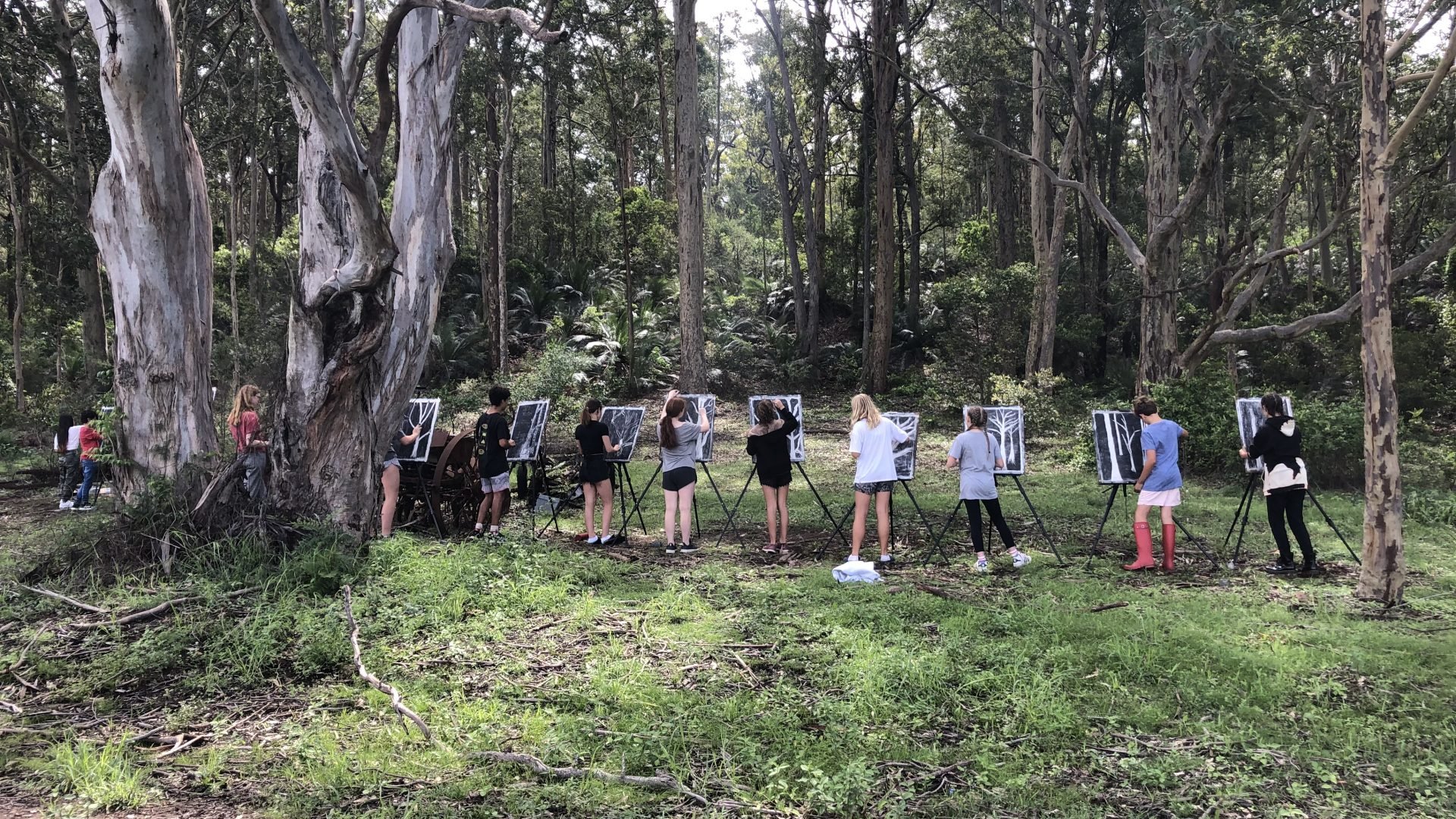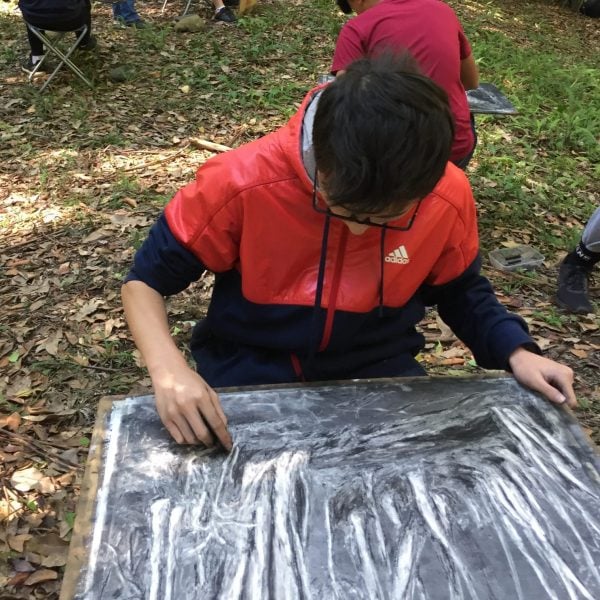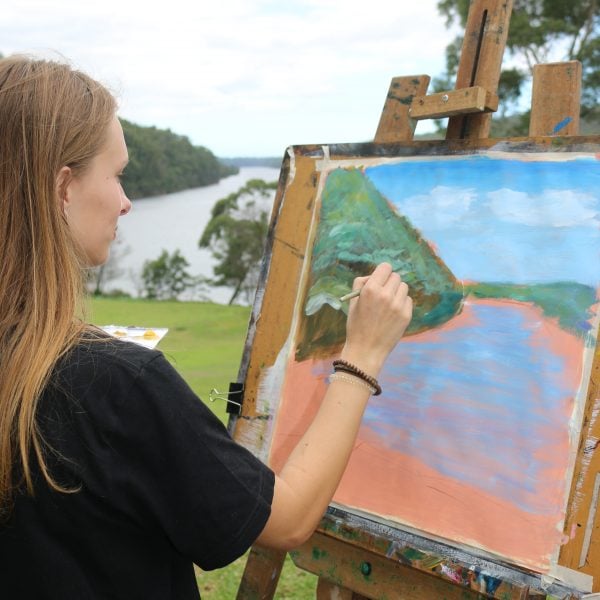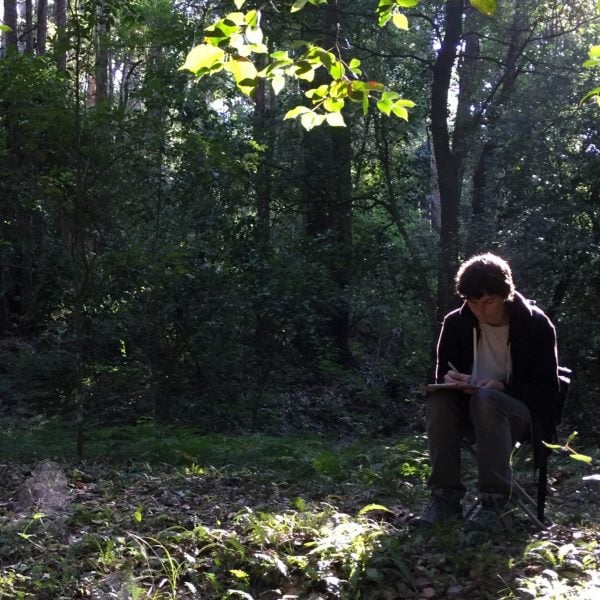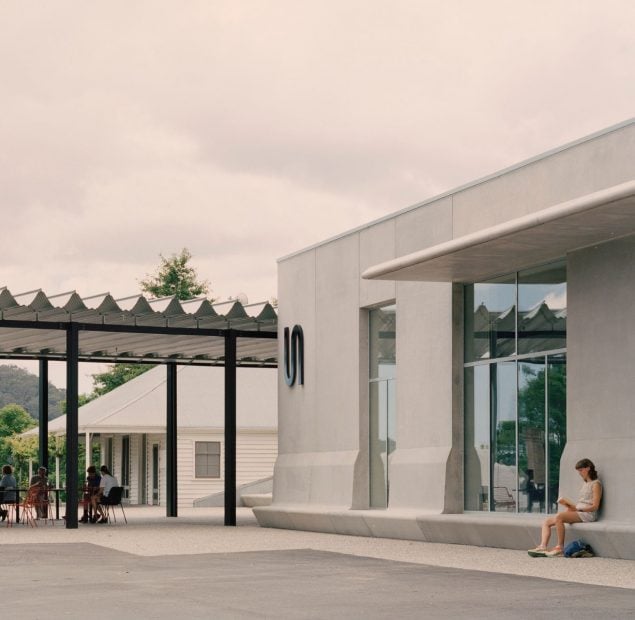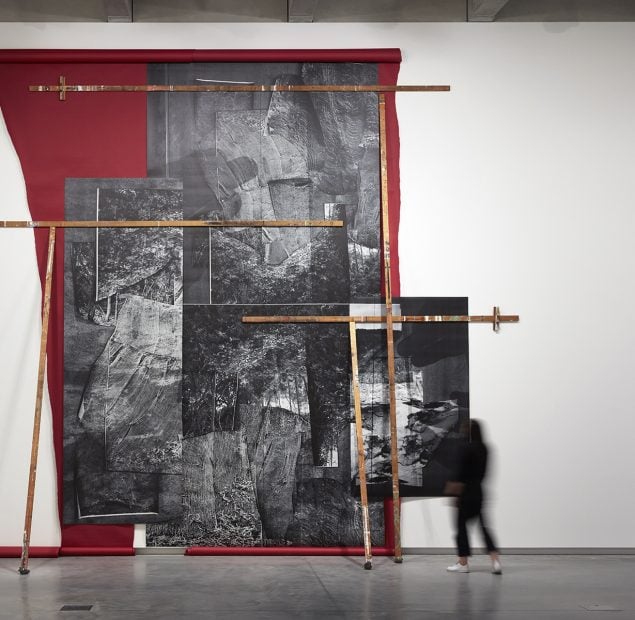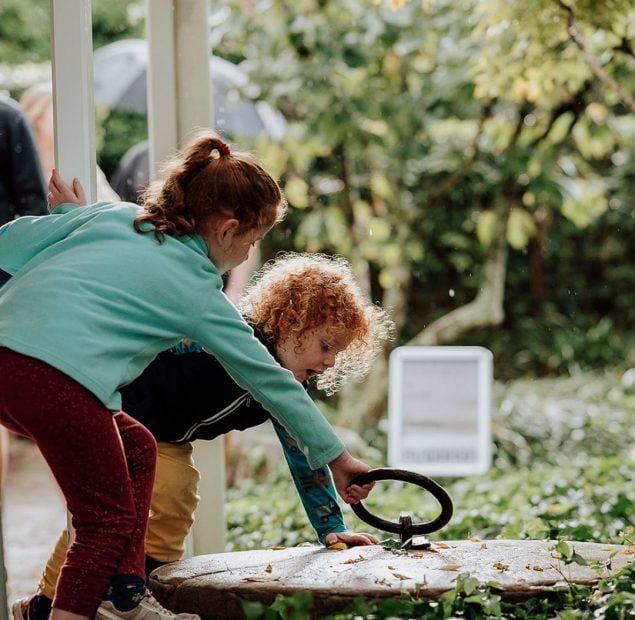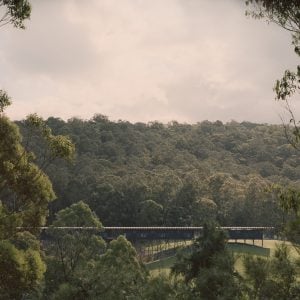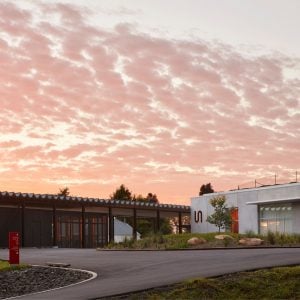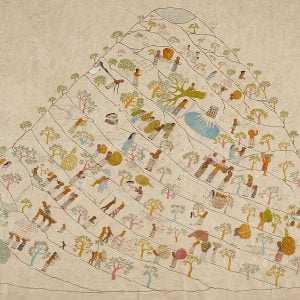This theme focuses on being in specific locations at Bundanon, responding to diversity in ecologies, plant communities and landforms. Personal responses to place encourage connection to broader ecological thinking. There are two options within this theme for day or short residential visits Ecologies of Place and In the Field.
Biophilia: In the Field
Working outside is a creative act, performative, an event. Participants explore the reasons why artists go outside to work. Throughout each activity in this program participants are challenged to think about making as a whole-body action. They consider the action of being outside to create work that captures a moment and responds to site. At the end of each activity participants will share their experience of being outside and how they may have had to adjust their approach to making.
Activities for Biophilia: In the Field
Schools can arrive at the Homestead or Art Museum. See below for options:
OPTION 1: Homestead visits start with Looking at Landscape
Looking at Landscape (1 hour)
Participants will explore artworks that examine interpretations of landscape, visiting Arthur Boyd’s Studio, Travelling Colony by Brook Andrew, and Treelines Track by Janet Laurence.
OR
OPTION 2: Art Museum visits start with Spark Ideas
Spark Ideas (1 hour)
Learners explore and analyse artworks on display in the Art Museum. Consideration is given to the variety of artmaking practices, techniques utilised and colour, form and material themes evident. This art analysis will inform learners about their own artmaking in the connected suite of learning experiences.
SET WORKSHOPS: All visits continue with…
Visual Effects (1.5 hours)
Exploring the Shoalhaven River, using ink and wash techniques, with drawing tools sourced from the environment, participants develop confidence in expressive drawing. Line, movement, texture and tone are a focus.
Layered Landscape (3 hours)
The bushland is the focal point for this landscape composition, focussing on additive and subtractive drawing and mark-making techniques. Using an experimental layered approach, tonal and textural responses to the landscape are developed. Subsequent layers of compressed charcoal and soft pastel refine the structures with texture and contrast.
Landscape Painting (3 hours)
River and bushland views are the inspiration for an acrylic landscape painting. Participants develop a personal approach to landscape painting, developing skills in colour mixing and limited palettes, while considering the act of painting outdoors. Participants explore ways of recording this experience of the landscape through movement, sound, film and other artforms.
Extension activities for Biophilia: In the Field
Designed to deepen the exploration into the theme and completed in the groups own time.
Visual Effects: Make your own drawing tools from found objects in the landscape (sticks, leaves twigs etc) and continue to explore ink techniques by creating a new image of the river view.
Landscape Painting: Working in groups of four, participants create a collaborative performance work, that expresses the way the body moved while taking part in Landscape Painting. Bundanon will provide further details about the process during the residential visit.
Two-night program includes:
9 hours of connected learning activities led by Bundanon’s specialist team:
- Looking at Landscape
- Beginnings
- Visual Effects
- Layered Landscape
- Landscape Painting
All art materials for each of the above activities.
All activities tailored to the stage required.
Day one activities take place at the homestead site.
Time for students to connect and undertake continuous learning.
Learning in spaces designed to connect with the natural world.
Contemporary accommodation with linen and towel provided.
Healthy and fresh onsite catering from afternoon tea on day one through to lunch on day three
Two nights provides opportunities to undertake:
- Bundanon’s optional extension activities, see below.
- Time for a deep dive into your own constructed learning experience.
- An exploration of a 30 minute self-guided walk through the Art Museum during your own program session times.
Cost from $400 per person
One-night program includes:
6 hours of connected learning activities led by Bundanon’s specialist team:
- Looking at Landscape
- Beginnings
- Visual Effects
- Landscape Painting
All art materials for each of the above activities.
All activities tailored to the stage required.
Day one activities take place at the homestead site.
Time for students to connect and undertake continuous learning.
Learning in spaces designed to connect with the natural world.
Contemporary accommodation with linen and towel provided.
Healthy and fresh onsite catering from afternoon tea on day one through to lunch on day two
One night provides opportunities to undertake:
- Bundanon’s optional extension activities, see below.
- An exploration of a 30 minute self-guided walk through the Art Museum during your own program session times.
Cost from $210 per person
Day visit program includes:
3 hours of connected learning activities led by Bundanon’s specialist team:
- Looking at Landscape
- Beginnings
- Visual Effects
All art materials for each of the above activities.
Activities take place at the homestead site.
All activities tailored to the stage required.
Time for students to connect and undertake a day of continuous learning.
Cost from $25 per person

